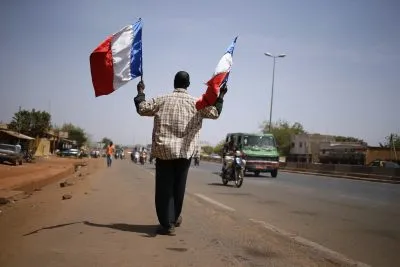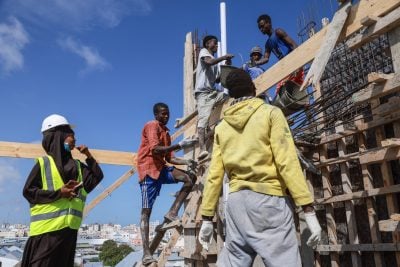African finance ministers and central bankers will soon be travelling to Washington, DC for the annual World Bank and International Monetary Fund (IMF) Spring Meetings. This annual pilgrimage is a critical moment to discuss the pressing issues impacting economic growth and development and maybe to announce further progress for a fairer global financial system. But as we look ahead to this convening in Washington, it occurs to me that we’re missing opportunities to advance economic growth closer to home.
For inspiration, we need to look no further than the recent Africa Cup of Nations hosted by Côte d’Ivoire. The tournament was a moment of joy – the traditional dancing, songs, and attire that people displayed during the opening ceremony and the games that I attended highlighted the unique energy and spirit that we, as Africans, possess. I was so pleased to see several teams landing in Abidjan, proudly wearing their national attire.
But there is so much more than meets the eye in the display of lèppi, a traditional Guinean hand-woven indigo fabric, the Ghanaian kente or the bògòlanfini of Mali. Those colourful cloths also represent an underdeveloped driver of economic growth: large domestic consumption of African-made goods.
It must be said that African fashion designers are leading the way. They weave with great sophistication our traditional fabrics with contemporary clothing cuts, in aid of preserving centuries of technique for younger generations to wear as advocates of our traditional craft. They fully embrace their African identities while taking advantage of what the Western world can offer best.
The world of entertainment is another example. The rise of homegrown music genres, such as Amapiano, not only shows that our continent produces award-winning, popular entertainment but also that this industry generates income and creates jobs.
Africa’s share of the global creative economy remains disproportionately low – accounting for $58.4bn and only 2.9% of global exports for creative goods. This equates to less than 1% of Africa’s GDP, a low figure compared to other mature markets that better capitalise on their creative industries. This is a significant source of untapped potential but there is reason to be optimistic: UN Trade and Development (formerly UNCTAD) has indicated that the trading of creative goods among developing countries has been steadily increasing. In 2020, 40.5% of creative goods exports were traded between developing world countries, but more can be done at home on our continent to spur homegrown trade.
The Africa Cup of Nations and similar events highlight how quickly these industries can scale when we amplify demand. I was told that preparations for the opening ceremony involved thousands of Ivoirians making masks, costumes, and many other items. When the demand was there, they delivered. But we need to make sure this doesn’t just happen every two years. We need to encourage continuous consumption of African-made products. By doing so, we can foster the development of value chains at national and regional levels across Africa, increase domestic revenues, and ultimately contribute to diversifying our economies.
To achieve this, we can take several steps. First, we need high-level commitment, both from political leaders and from cultural icons including musicians, actors and sports personalities. Some African leaders already celebrate local, traditional products; but more can be done. In Guinea, clothes made from the lèppi handmade indigo fabric are very popular and public figures wear them regularly when participating in high-profile events. I have done so on several occasions, which has allowed me to showcase the talent of our local entrepreneurs in new markets.
Second, we need to make it easier for African entrepreneurs to access markets in other regions across the continent. Supply-side reform must prioritise fostering a business-friendly environment and offering flexible financing products. This should be combined with pragmatic measures to support small and medium-sized enterprises. We should pay particular attention to those in the informal sector, which makes up between 25% to 65% of GDP in Sub-Saharan African economies and provides 30%-90% of employment.
Finally, national budgets and public procurement should be leveraged to support African industry. African nations spend an average of 17% of GDP on the procurement of public goods, works, and services. This is a powerful tool to foster increased local production, develop partnerships, and promote more inclusive and sustainable economies.
As African ministers pack their bags for Washington, I hope they will remember to bring their national attire and wear it with pride. When they return home, they have an opportunity to reignite the pan-African solidarity and spirit showcased at the African Cup of Nations to build a new form of economic resilience, which will make us less reliant on global aid and development finance in the future.
Want to continue reading? Subscribe today.
You've read all your free articles for this month! Subscribe now to enjoy full access to our content.
Digital Monthly
£8.00 / month
Receive full unlimited access to our articles, opinions, podcasts and more.
Digital Yearly
£70.00 / year
Our best value offer - save £26 and gain access to all of our digital content for an entire year!

 Sign in with Google
Sign in with Google 



